In This Issue
The opinions, beliefs and viewpoints expressed in this publication are those of the authors. They do not necessarily reflect the opinions, beliefs, viewpoints or official policies of Autism Society Alberta.
|
|
|
End article-->
Autistic Peer Mentors and ASA Receive Premier's Council on the Status of Persons with Disabilities Awards
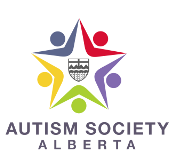
The annual Premier's Council Awards publicly acknowledge the efforts and accomplishments of individuals, groups, businesses and organizations to develop barrier-free, inclusive communities in Alberta.
 This year, Autism Society Alberta received the Premier's Council on the Status of Persons with Disabilities Award of Excellence in Employment. The award recognizes ASA's inclusive hiring for the COVID Emergency Response and Recovery Initiative. Leslie Allen, Board Secretary for Autism Society Alberta, was proud to accept the award at a virtual International Day of Persons with Disabilities event on December 3. This year, Autism Society Alberta received the Premier's Council on the Status of Persons with Disabilities Award of Excellence in Employment. The award recognizes ASA's inclusive hiring for the COVID Emergency Response and Recovery Initiative. Leslie Allen, Board Secretary for Autism Society Alberta, was proud to accept the award at a virtual International Day of Persons with Disabilities event on December 3.
"Our strength is to have those with lived experience be on our team. No one can better understand the journey than someone who has walked that path. We thank the Premier’s Council on the Status of Persons with Disabilities for this wonderful recognition.”
– Leslie Allen, Board Secretary, Autism Society Alberta
Two of our amazing staff have also been recognized and received the Award of Excellence in Education for their invaluable contributions as autistic peer mentors.
“We did this together. We are all comrades, and we are all advocates.”
– Aksana Kirton, Autistic Peer Mentor, Autism Society Alberta
“I consider myself lucky to have been afforded the opportunity to address systemic problems for autistic adults as a peer mentor. My approach, which the award is recognizing, is to look at the system honestly for all its rough edges, as well as the positive experiences it offers. Through this lens, I am able to address navigational issues as well as reconcile epistemological issues many autistic adults fight with on a daily basis.”
– Adam Kedmy, Autistic Peer Mentor, Autism Society Alberta
|
|
|
End article-->
Barbara Stewart Self-Advocates Fund Campaign Update

In conjunction with Autism Awareness Month and Disability Employment Awareness Month in October, we launched an eight-week campaign in support of the Barbara Stewart Self Advocates Fund to ensure Autism  Society Alberta has the capacity to continue to employ Autistic individuals. Society Alberta has the capacity to continue to employ Autistic individuals.
On December 15th, our campaign, together with Dr. Neil Roberts' matching funds, raised a total of $12,370!
A special thank you to Dr. Neil Roberts, Audrey Veltri and IG Wealth Management, and to all those who generously contributed to the campaign. Your gift promotes employment inclusion and celebrates the many valued contributions of autistic workers.
|
|
|
End article-->
Give The Gift That Keeps On Giving!

This holiday season, give a gift that will offer children and autistic adults in every corner of our province an opportunity to dream of a brighter future.
How does a donation to Autism Society Alberta help?
 $25 sponsors a self-advocate to attend a future Autism Alberta’s Alliance event $25 sponsors a self-advocate to attend a future Autism Alberta’s Alliance event- $100 supports two families calling our toll free line looking for support and information
- $500 enables Autism Society Alberta to send an autism presenter to certain rural regions
Together, we can shape and influence Alberta’s future, create more opportunities, and bring more hope to Albertans living with autism.
Click here to donate
|
|
|
End article-->
Autism Alberta's Newest Online Toolkit:
A Visual Aid Library

 We've just finished putting the finishing touches on our newest online toolkit: a collection of visual aids to help both younger and older kids with autism navigate school, home and family, the world of COVID-19, and more. Click here to check it out! We've just finished putting the finishing touches on our newest online toolkit: a collection of visual aids to help both younger and older kids with autism navigate school, home and family, the world of COVID-19, and more. Click here to check it out!
|
|
|
End article-->
A Real Life Perspective on Stimming
Kitty Parlby
Many of us with a connection to the autism world are familiar with stimming. The word stimming refers to self-stimulating behaviours, which often exhibit as repetitive movements or sounds. Although all people stim in some way, autistic individuals may do it more often, for longer periods of time, and in unusual ways. Because of this, their stimming can be much more noticeable than a neurotypical person’s stims. Here are just some of the forms their stimming can take:
- Rocking
- Repetitive blinking
- Continuous jumping
- Hand flapping
- Repetitive vocalizations
 Toe walking Toe walking- Head banging
- Sniffing at people or items
- Rubbing or scratching the skin
- Rhythmic tapping or finger movement
- Repositioning objects
- Staring at lights or ceiling fans
I often get questions from education professionals about stimming, especially when they feel it’s disrupting their classroom and hampering their ability to teach. I ALWAYS start off by explaining that stimming has a function for the person engaging in it. It is individual to each autistic person, and could be occurring for a multitude of reasons in a variety of circumstances. Here's a list of some of the purposes stimming may fill:
- To self-regulate using physical release when experiencing overwhelming sensory input
- To express excitement/happiness
- To distract from, block or override uncomfortable sensory input by having something else to focus on
- To reduce stress/anxiety
- To adapt to a new situation or environment
- To increase or maintain focus
- To express frustration
- To seek and obtain sensory input (stimulate under-sensitive senses)
- To reduce pain
- To manage strong emotions
So, knowing that stimming has a purpose, asking how to get rid of it is the wrong question. Instead you might ask what this person is getting from the stim. If it really is too disruptive for the environment, or is injurious to themselves or others, there are strategies that can be used to redirect or replace stims. If you can figure out what is triggering the stim in any given setting (such as a sound, bright lights, or a particular person), you might be able to mitigate that trigger and lessen the need to stim. It’s important to remember that insistence on stopping a stim without knowing its purpose will often cause another stim to pop up that serves the same function, and it may be one that’s even more disruptive.
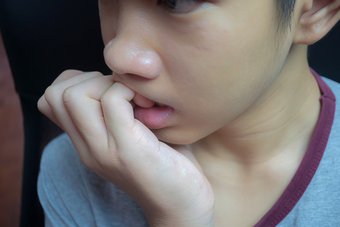 Some consequences of stimming revolve around people’s reactions or avoidance of the person. One should never be punished, chastised or ridiculed for stimming. I’d like to point out that any community’s acceptance of stimming can be greatly increased with understanding. For example, in a classroom (with a parent’s permission, and that of the student, if possible), you can start a conversation about why Kevin moves that way and how it helps him. If language permits and he wants to be involved, perhaps Kevin can help explain things. Maybe the teacher can even bring to light the stims that neuro-typical students engage in without even realizing it. This approach of sharing is not for everyone, but it’s one option to demystify an often very noticeable trait of autism. Some consequences of stimming revolve around people’s reactions or avoidance of the person. One should never be punished, chastised or ridiculed for stimming. I’d like to point out that any community’s acceptance of stimming can be greatly increased with understanding. For example, in a classroom (with a parent’s permission, and that of the student, if possible), you can start a conversation about why Kevin moves that way and how it helps him. If language permits and he wants to be involved, perhaps Kevin can help explain things. Maybe the teacher can even bring to light the stims that neuro-typical students engage in without even realizing it. This approach of sharing is not for everyone, but it’s one option to demystify an often very noticeable trait of autism.
With that in mind, I decided to ask autistic adults about how they stim, and what it does for them. Sometimes they can describe how the stim helps; other times they just know it works. I’d like to share with you some of the responses I received:
- When I was a kid I did a variety of things: glue on hands, slapping the back of my neck with a ruler, rubbing my arms, etc. Most of the time it was to relieve nervous energy or alleviate boredom.
- Rubbing my thumb and index finger. It helps me solve complex problems, including how to figure out people with behaviours that are not congruent with what they are saying.
- I have a “socially accepted” version of flapping. It’s more like jumping on the same spot with my arms bent upwards close to my body, and I shake my hands as if I was playing maracas. It happens when I have a burst of joy. It helps me release it out of my body – it feels like I’m going to explode because I’m so full of it.
- I zone out when my senses are overwhelmed or too much is going on in my brain. I don’t do it consciously, though, but it gives my brain a break from it all.
- When I was in school I would often jump up from my desk and stomp around the classroom. It was like I couldn’t “feel” what was happening or where I was until I did that.
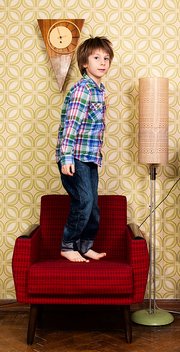 I rub my fingers on my palm when I am getting really stressed out. I do it subconsciously. It grounds me in a sense. Sort of like how they recommend holding a heavy object when you're feeling anxious. I rub my fingers on my palm when I am getting really stressed out. I do it subconsciously. It grounds me in a sense. Sort of like how they recommend holding a heavy object when you're feeling anxious.- I have to find something to do with my hands at times when I have to sit still. It’s like the energy is flowing instead of building up to a nasty explosion.
- When I was younger and had a lot of difficulty sitting still, I'd often find my leg shaking/vibrating under the table or desk. It felt so involuntary that I honestly got worried about the cause.
- Humming and rocking. Rocking makes me feel like everything's ok when I'm in public, like standing in line shopping. I don’t know why the humming; it just fills space in my head, like repeating words.
- Nowadays I'll hand drum on myself or use objects for percussion purposes. Usually as a nervous energy distraction.
I have one last bit of input to share with you. My own 24-year-old son is autistic and is intellectually delayed. His communication is somewhat limited, but I waited until he was doing one of his usual stims, jumping, and asked him, “Eric, what makes you jump; how does it feel?” With wide eyes, he replied, “I’m excited!” Trying to get more details I asked, “What are you excited about while you’re jumping right now?” His answer: “I’m excited for Covid to end!”
Kitty Parlby is the mother of a young adult with autism. She is a former special needs Educational Assistant and an autism speaker and consultant with Autism Inspirations. She currently works as a Family Support Worker for Autism Society Alberta.
|
|
|
The Future of Autism Supports and Services in Alberta: A Wake Up Call

On November 10 and 12, eighty-four people from around Alberta participated in virtual town halls, and sixty-five responded to an online survey.
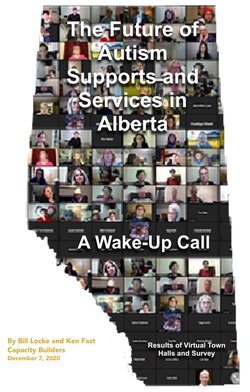 What do these participants have in common? They each have a lived experience of life on the Autism spectrum, facing extraordinary challenges every day and taking every step possible towards a meaningful life. They are individuals on the spectrum; parents, spouses and family members; professionals and frontline workers in the community. What do these participants have in common? They each have a lived experience of life on the Autism spectrum, facing extraordinary challenges every day and taking every step possible towards a meaningful life. They are individuals on the spectrum; parents, spouses and family members; professionals and frontline workers in the community.
Every one of the participants are affected by powerful forces influencing systemic change to services and supports: low oil prices, a depressed economy, a deepening provincial deficit, and the COVID-19 pandemic, with its unpredictable health risks, shutdowns and daunting mental health pressures. They were honest and open about their situations.
Click here to read the report from the Town Halls
|
|
|
End article-->
My Personal Pandemic
Anantha Krishnamurthy
Anantha is a 13-year-old semi-verbal autistic boy who communicates by typing or using a letterboard. His mother submitted this poem to Autism Around Alberta.
So you are
Tired of being stuck at home
Others telling you
What to do
Your life
Changing out of your control
Anxiety
Growing deeper
Funny
How a global pandemic
Made me realize my own autism
My personal pandemic
Stuck in my head
Others dictating my every move
Change
Anxiety
No resources
No support
No end date in sight
I sympathize
It's hard
Overwhelming
And scary
We will come through
Together
But I ask
Please
Do not forget
My personal pandemic
|
|
|
Study on Body Image and Eating Behaviours

The ENHANCE Lab at the University of Calgary is recruiting female teens aged 12-17, along with a parent/caregiver, to participate in a study on body image and eating behaviours in girls with and without autism.
Participants will be asked to complete a brief phone screening and fill out online questionnaires about their eating behaviours, thoughts, and feelings about their body.
To participate or for more info, contact enhancelab@ucalgary.ca
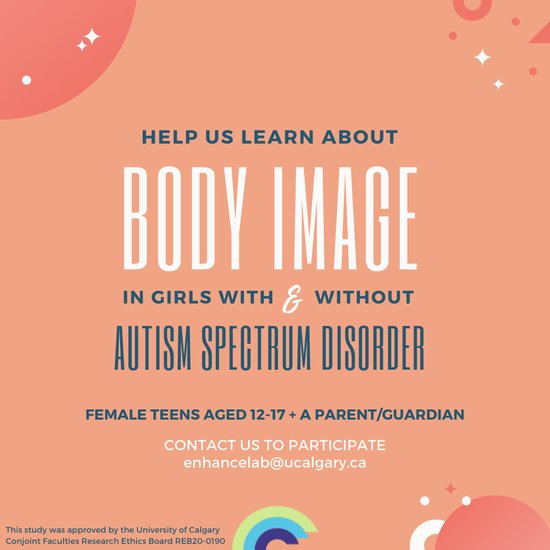
|
|
|
End article-->
The Chaos That Won't Subside
Hope Rudics
Well... It’s been 9 months?... No, 10?.. 11, even?
Who's still keeping track?
 As many people do, I love beginning a new year with loved ones, and Christmas is one of my favorite holidays. I am also an optimist, sometimes too much so for my own good. But 2020 and the cursed COVID-19 have really – and I mean really – tested me. As many people do, I love beginning a new year with loved ones, and Christmas is one of my favorite holidays. I am also an optimist, sometimes too much so for my own good. But 2020 and the cursed COVID-19 have really – and I mean really – tested me.
Just as we started to settle into a new routine with both kids in school (and the news that there would be classroom support for our oldest) and great jobs, COVID made a very unwelcome appearance. School closures, layoffs, isolations, and lockdowns all took a toll on the mental health of myself and my husband, and unfortunately trickled down to my kids, since we feed off of each other. That is one of the worst feelings a parent can have. You find yourself struggling, and it leaves you at a complete loss as to what you should do, what to say, because they feel it all too, and you are all having issues processing these intense new feelings.
We all know parenting doesn't come with a manual, but I never expected to be raising my kids in a pandemic. THAT should come with a manual.
Our kids are struggling. The holidays are coming. Santa is cancelled, and my kids can't even see their Nana and Papa this year. But as much as it breaks my heart... I'm an optimist.
This means that this year, we admire all the pretty lights from our warm car instead of huddled with our neighbors.
This means that this year, there will be no packing up of the kids, gifts and side dishes to join extended family for dinner.
This means that this year, we make our own traditions as a household, watch Christmas movies and drink hot chocolate. We even opted to support local and have a family-owned joint to prepare our meal and provide curbside pickup. And again, the optimist in me knows I'm fortunate because everyone in my family has some sort of device to log onto a Christmas Zoom call. Not every person has that opportunity, and I hope they are able to find their own silver linings in these hard times.
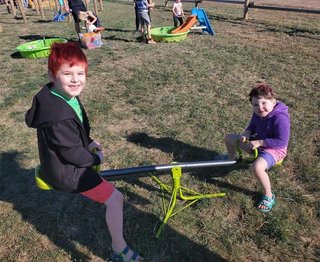 In my article six months ago, I mentioned how fragile everyone's mental state was, and I want to stress that even more so now. COVID has only revved up instead of slowing down, so now we really need to take care of our loved ones’ and our own mental health. People are isolated and alone, and this time of year also adds the burden of Seasonal Affective Disorder (SAD) onto a lot of people’s shoulders. So, please reach out as much as you can to your close ones, to give or receive support. In my article six months ago, I mentioned how fragile everyone's mental state was, and I want to stress that even more so now. COVID has only revved up instead of slowing down, so now we really need to take care of our loved ones’ and our own mental health. People are isolated and alone, and this time of year also adds the burden of Seasonal Affective Disorder (SAD) onto a lot of people’s shoulders. So, please reach out as much as you can to your close ones, to give or receive support.
Christmas break was extended, and a few days of virtual learning were thrown in there. Some grades are even back to full-time online learning. We have to tip our hats to all of our youth for handling such drastic changes and uncertainty with as much patience and grace as they are. Our days are not perfect, by any means, and we have more meltdowns lately. Emotions are flying. It’s too much change for a house that is, for the most part, not fond of change.
But by taking it day by day, we have all made it this far.
|
|
|
Autism RMWB Presents: The Missing Piece Project
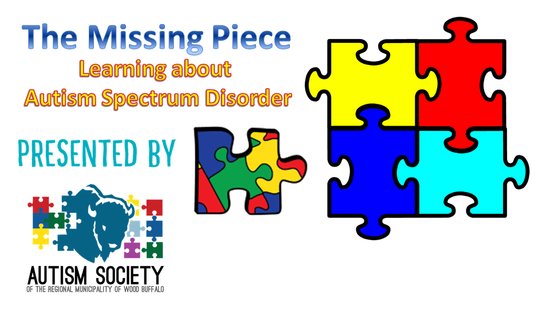
The Autism Society of the Regional Municipality of Wood Buffalo strongly believes that understanding and acceptance are the way to inclusion. Open conversations and education on accepting differences are a step towards breaking down barriers. It was from this belief that the Missing Piece Project was formed.
The use of the puzzle piece to represent autism has been known to cause some controversy. Some see it as depicting a person with autism as broken or not whole. The Autism Society looks at the symbol differently, however. We do not see autism as a mystery needing to be solved, nor do we believe a person with autism is missing something or needs to be fixed. The pieces of the puzzle, for us, reflect the services, supports and community awareness that need to be put together. You see, the individual is whole already. Our goal is to finish the picture around the person. If we can strengthen existing supports and services, create new ones, and raise acceptance in our community, our belief is we can enhance the picture.
"There are no extra pieces in the universe. Everyone is here because he or she has a place to fill, and every piece must fit itself into the big jigsaw puzzle."
– Deepak Chopra
 The Missing Pieces Program was created by the Society as a lending resource accessible to anyone, and is available free of charge. It was developed with the intention of promoting and educating others about Autism Spectrum Disorder. With a focus on acceptance and understanding, it covers topics of understanding ASD, acceptance of differences, and how to adapt your environment to be inclusive of everyone's needs. Since its conception, it has grown into a library of presentations that cover a range of topics for almost any organization, service provider, parent, caregiver, business or employer wishing to learn more about ASD acceptance and accommodations. The Missing Pieces Program was created by the Society as a lending resource accessible to anyone, and is available free of charge. It was developed with the intention of promoting and educating others about Autism Spectrum Disorder. With a focus on acceptance and understanding, it covers topics of understanding ASD, acceptance of differences, and how to adapt your environment to be inclusive of everyone's needs. Since its conception, it has grown into a library of presentations that cover a range of topics for almost any organization, service provider, parent, caregiver, business or employer wishing to learn more about ASD acceptance and accommodations.
Ours school lending bins have been created for an intended audience of early entry to Grade 6. Educators can request to borrow a bin for their class. Included in the bin is a collection of books, interactive material and an informative slideshow. We have ensured that the bins have curriculum-related material that could be substituted for items in health or language arts. Reading comprehension activities, novel study materials, and critical thinking activities are just some of what you will find in this resource. We have also made sure to add Leader in Me language to slideshow content.
An extensive teacher resourse guide has been created for each bin, and offers ideas for activities and group projects. A teacher could use as little or as much of this program as they like. The resource can be borrowed from the Society office, with training provided, if required or requested. A presentation to the intended audience is available by our Community Development Officer, as well.
We also offer a growing library of books and material for siblings, family members, and most importantly, for individuals themselves. From children’s and family books such as Why Johnny Doesn’t Flap and All My Stripes, to longer reads like Uniquely Human and the Reasons I Jump, we have something for everyone. Looking for something to help navigate puberty? We have a wide range of body awareness and health material that we will choose from to create a custom kit made for your needs. They’re great for both parents and teachers! Our collection of stories, visuals, books and hands-on material could be just what you need to help explain topics such as puberty, hygiene, menstruation, masturbation, and appropriate touch.
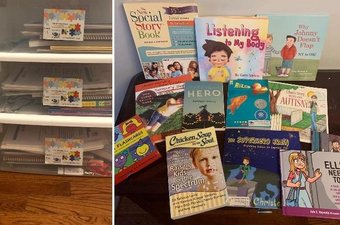 Are you a service provider or business looking to gain more knowledge or offer your staff a new professional development opportunity? Then this program is also for you! Our Community Development Officer provides custom, interactive presentations and learning opportunities. This free resource can help your organization take that step toward creating a more inclusive space. Find out how we can help you today. Are you a service provider or business looking to gain more knowledge or offer your staff a new professional development opportunity? Then this program is also for you! Our Community Development Officer provides custom, interactive presentations and learning opportunities. This free resource can help your organization take that step toward creating a more inclusive space. Find out how we can help you today.
We are continuing to grow and develop this resource to ensure we can make all the pieces in the community come together.
We have been able to continue the delivery of this program through funding provided by the Community Initiative Grant from the Regional Municipality of Wood Buffalo. If you are interested in making a contribution to this project, please visit https://autismrmwb.org/donate/
For more information, contact our Community Development Officer at community@autismrmwb.org or 780-215-2459
|
|
|
End article-->
Light at the End of the Tunnel
Terri Robson
I debated with myself during the course of writing this as to when, in the course of the article, to disclose that I have Asperger Syndrome. Should I come write out with it (pardon the pun), or should I build suspense until the end? Needless to say, I decided to come right out with it – a very special co-worker suggested I fill you in at the beginning.
I have spent most of my life wondering what was wrong with me and why I was so different. For the longest time I didn’t have any answers, and neither did anybody else – not that many people wanted to know. It seemed no one wanted to get to know me or understand me. But I must say I didn’t know or understand myself, either. I didn’t have any friends. Sometimes that really hurt, yet at other times it didn’t bother me at all, and I was quite content to do my own thing. What a strange contradiction.
There were many issues with family members. When I was a child, as I discovered years later, my aunt would have her version of a pep talk with my cousins before we went for a visit. It went something like this: “Okay, boys, your Auntie Marilyn and the kids are coming for a visit. We all know how Terri  can be, so we need to tread lightly.” I’m still amazed that, after all these years, these words still have the power to devastate me at times. can be, so we need to tread lightly.” I’m still amazed that, after all these years, these words still have the power to devastate me at times.
There were, and are, good things about me – special gifts, if you will. Yet not many seemed to notice. I excelled at academics, music and sports (although the last one may be hard to believe, given how uncoordinated and clumsy I am). And yet, people only seemed to see my “obnoxious and socially unacceptable” behaviours. I wanted to shout, “there is a fun and enjoyable person in here”, but I couldn’t, because more often than not, I wasn’t even aware of it myself. I was ostracized and bullied in school, even though I was bigger than most of my peers. It wasn’t “easy being green”.
So I did my own thing and got in trouble a lot, because I didn’t conform to the norm. Just what is the “norm”, anyway? It took me many years to develop coping skills and techniques that allowed me to do the things I wanted to do, and knew I was capable of doing. At the time, I didn’t realize I was developing these skills. Through all my struggles, I was very blessed to have two or three people who accepted me and loved me unconditionally.
My music and my love of reading helped through the tough times (of which there are still many). When I was playing the trumpet, and later the euphonium, I was able to put all the hurt, anguish, shame and joy into my music. No one was intimidated by the depth and breadth of all that emotion. What an experience. There was much more to my life than I was able to appreciate at the time.
My diagnosis of Asperger Syndrome came late in my life; well, at the time I thought it was late. I was in my early thirties. Initially the diagnosis was ADHD, yet that didn’t ever seem to fit. My partner and friends – the one or two that I had – didn’t agree with the ADHD diagnosis, either, because I met very few of the criteria. However, that’s all I had, so I went with it. A few years later, my psychiatrist mentioned Asperger Syndrome; he believed I should be the recipient of such a delightful diagnosis. Luckie me – I’m an Aspie!!
Actually, he was bang-on. As I started reading more and more literature – or at least, what there was of it at the time – I realized I could have been, and still should be, the poster child for Asperger Syndrome. What an incredible relief; I finally had something to hang my hat on. For those of you who are reluctant to label your child (or yourself), I encourage you to go for it. There was a reason I did all those strange and wonderful things as I was growing. I wasn’t just a freak who didn’t fit in anywhere, and who nobody liked. Now I’m a freak with a label, and I love it.
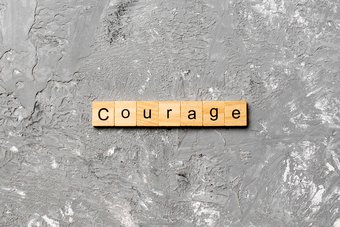 I have come to a place in my life where I respect, love and honour who I am and my uniqueness in the world. I still don’t always fit in, but that’s okay, because I have my own space. I don’t always behave appropriately or say the right things in public, but when my family and friends need my support, I somehow figure it out. I am honest to a fault, and loyal beyond belief. Once you’ve climbed my walls and seen through the behaviours and mannerisms that offend you, you will find I have a very special place in your heart, as you do in mine. Love and accept me for who I am, and you’ll find the rewards are tremendous. (So are some of the challenges, but hey – that goes with the territory.) I have come to a place in my life where I respect, love and honour who I am and my uniqueness in the world. I still don’t always fit in, but that’s okay, because I have my own space. I don’t always behave appropriately or say the right things in public, but when my family and friends need my support, I somehow figure it out. I am honest to a fault, and loyal beyond belief. Once you’ve climbed my walls and seen through the behaviours and mannerisms that offend you, you will find I have a very special place in your heart, as you do in mine. Love and accept me for who I am, and you’ll find the rewards are tremendous. (So are some of the challenges, but hey – that goes with the territory.)
There is a wonderful quote by Mary Anne Radmacher: “Courage doesn’t always roar. Sometimes courage is the quiet voice at the end of the day saying, ‘I will try again tomorrow.’ ”
It takes courage each day to get up and take on the world of Asperger Syndrome. But do take the journey with your student, child, family member or friend, as you both grow and learn. Remember, there is light at the end of the tunnel. I have found mine, and it grows brighter each day.
Terri Robson, B.Ed.
terrirobson@gmail.com
|
|
|
Changes to Our Holiday Traditions
Brandon Rudics
Last month I wrote an article about change, and how change is inevitable, but important to embrace. This month, it’s time to practice what I preach.
 The holidays are upon us – a time usually filled with joy and celebrating. The holidays are upon us – a time usually filled with joy and celebrating.
With Covid-19 rearing its ugly head with record numbers here in Alberta, the 2020 holiday season will certainly look different from other years.
Yes, all our annual family traditions will change this year. No more Christmas Eve movies and pyjama parties at Nana and Papa’s. No more Christmas morning breakfast with Papa at helm in the kitchen. No laughing with Gigi and Pampa. No running around with the cousins. Yes, this Christmas will be the strangest Christmas yet.
As I mentioned last month, change is hard. Not being able to do the same fun activities that we’ve always been accustomed to is heartbreaking. But change is inevitable.
So how do we keep positive, and keep the holiday season filled with love and joy? Well, how about some new traditions? Instead of going to Nana and Papa’s for Christmas this year, we will be doing Christmas in our small house with our immediate family.
I am grateful to be able to stay in touch with loved ones via Zoom, and other apps. Even though Nana and Papa won’t see how excited the kids are in person when opening their presents, they will be able to see their smiling faces via online messaging.
Even though we can’t go to Nana and Papa’s for a Christmas Eve pajama party and movies, we will instead do a Christmas Eve pinata full of snacks, and sit down as a small family together and watch “How the Grinch Stole Christmas”.
Even the food will be different! This year we won't get to indulge in Gigi’s famous stuffing, meat pies, or pecan pie. But, we will get to support a local business by ordering our Christmas Dinner ahead of time and having it delivered. (Let’s be real – I just did not want to wash dishes!)
 This holiday season will be full of change for lots and lots of people, and it will be hard for a lot of us who are used to annual traditions. But, think of the fun you can have creating new traditions. Think of the memories that will be created for a lifetime. Covid Christmas 2020 won't soon be forgotten! This holiday season will be full of change for lots and lots of people, and it will be hard for a lot of us who are used to annual traditions. But, think of the fun you can have creating new traditions. Think of the memories that will be created for a lifetime. Covid Christmas 2020 won't soon be forgotten!
Thank you all for reading. I hope everyone has an AMAZING holiday season filled with love and joy! See you in 2021!
|
|
|
Workshop on Transitioning to Adulthood
 
|
|
|
End article-->
My Authentic Self
Bruce Petherick
A few weeks ago during a podcast interview about my autism and music, one of the interviewers raised the possibility that since my discovery of my autism, I could start living my authentic self. (As a side note here, I like using the terms “discovery of my autism”, as I know we live in a society where many people don’t have easy access to being diagnosed). I agreed, mainly because I had heard this phrase used in connection with a lot of people who discovered their autism later in life, and I knew that this also was the way I now wanted to live my life. Since that time, I have been thinking deeply about what it actually means to live my authentic self.
Of course, this term has been used by so many people, especially people who present themselves as self-help “experts” on the internet. I do like Brené Brown’s quote from her book “The Gifts of Imperfection”:
Authenticity is the daily practice of letting go of who we think we're supposed to be and embracing who we are.
I think this describes my autistic situation pretty well.
Seeing my earlier life through the autistic prism allows me to interpret many actions in a different way. I realise that I have masked a lot in social situations so that I would fit into the neurotypical behaviours that are often expected. In a lot of these situations, especially social events with many people, I was feeling exhausted, especially mentally. I knew from an early age that I didn’t  like, or more accurately hated, parties. Small talk was pointless to me. In fact, I learned to respond to the question: “How are you” by always answering “4.7”, and if asked why this response, I would respond “4.7 out of 5”, or “4.7 out of 3”, or even “4.7 out of 100”, depending on how I thought I felt. The precision of the scoring system satisfied me greatly, without really knowing what others thought of this. like, or more accurately hated, parties. Small talk was pointless to me. In fact, I learned to respond to the question: “How are you” by always answering “4.7”, and if asked why this response, I would respond “4.7 out of 5”, or “4.7 out of 3”, or even “4.7 out of 100”, depending on how I thought I felt. The precision of the scoring system satisfied me greatly, without really knowing what others thought of this.
Of course, there were other situations where I felt a lot more comfortable and at ease. Performing music never caused me any mental exhaustion. Even conducting in front of over a hundred people didn’t worry me, and neither would talking to people in a rehearsal room. The nervous part for me was the functions after the performance. I felt pretty comfortable in the school room, either as a student or as a teacher. I was in control of what was happening, and I wasn’t wearing my mask in these situations.
Does that mean I was living my authentic self at these times? After much reflection, I think: “No, I wasn’t living my authentic self.” I was still masking, wearing many masks, all of the time. I was too scared to allow anyone to see what my authentic self was, even me. I had no fully formed idea of what my authentic self should be.
In a recent blog post on the Scientific American website, Jennifer Beer, a professor of psychology at the University of Texas, Austin wrote:
“Although most people would define authenticity as acting in accordance with your idiosyncratic set of values and qualities, research has shown that people feel most authentic when they conform to a particular set of socially approved qualities, such as being extroverted, emotionally stable, conscientious, intellectual and agreeable.”
She is describing here the difference between living an (actual) authentic self, and the feeling that one is living an authentic self. I am sure that her intended audience is mainly neurotypical, but it also raises the point that a challenge that we neurodiverse people have is often more difficult for neurotypical people.
In another podcast interview this year, I said that all the best things about my life come from my autism. I think this is another case of that. Being accepted as neurodiverse has allowed me to be fully open with myself as to what I want and need and who I (truly/authentically) am. I have given myself the permission to find my authentic self and recognise when I am masking, and how to be more comfortable with removing the mask, at least in safe spaces. I am sure that this is a lifelong project, one to which I am greatly looking forward.

|
|
|
Social Narratives – Part 2
Carmen Moore
This month, I plan to continue to highlight the EBP of ‘social narratives’. SNs are usually associated with Social Stories, but they are actually a broader topic, as we will also discuss Power Cards (which may be a new term to you). This will be Part 2 of a three-part series highlighting this one strategy. Much of the information in this article is from the related AFIRM online module (link below).
In Part 2, I want to talk about how to use the EBP of Social Narratives most effectively. As you know, the ‘how’ can be more important than the ‘what’ when trying something new. It can be tempting to skip over steps, but thoughtful implementation will give a better chance of success.
 Identify the social situation for this intervention/strategy. Gather as much information as possible about it. What is happening? Who is involved? Are the same people involved each time? What are the different perspectives of those involved? What might the learner not understand about the situation? Identify the social situation for this intervention/strategy. Gather as much information as possible about it. What is happening? Who is involved? Are the same people involved each time? What are the different perspectives of those involved? What might the learner not understand about the situation?- Consider what the target behaviour or skill is. What are you hoping to see at the end? What would success or growth look like? I like the phrase, ‘Begin with the end in mind’, as the destination helps to map to journey, so to speak.
- Select the type of narrative that you want to use (social story or power card).
- Write (or borrow or buy) the social narrative following the criteria for the type you chose – SS or PC – as each is slightly different.
- Write from the learner’s point of view. Consider length and comprehension level.
- Include pictures and perhaps also encourage the learner to help write the story.
- Design the appropriate text, font, and visuals for the particular social narrative
- Identify best times or activities to use this social narrative.
One important note about choosing pictures for the narrative is that some people may prefer to use ‘real life’ pictures, or may prefer cartoon pictures. Some readers also prefer to have themselves or people they know as the subjects of the pictures. There is some research supporting the effectiveness of using real pictures. For example, using a picture of the actual backpack and hooks at their school when learning where to hang them up, instead of a generic picture or a cartoon, will be more effective. Using a picture of the learner participating in the target behaviour or goal is very effective, as well. Seeing themselves being successful in each step can be powerful!
“Hey! Why are you reading this to me, anyways??”
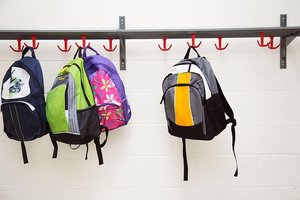 It can be important to note that some older (or even younger) learners may feel that you are somehow tricking or trying to manipulate them if you just pull out the social story and begin using it. It can be helpful to first explain to them that research shows this is one good way to learn about the new skill or social situation, and asking, “I wondered if you wanted to listen?” I made the mistake of skipping this step while reading a social story about having a sleepover without any word of the upcoming sleepover – it wasn’t that effective. It can be important to note that some older (or even younger) learners may feel that you are somehow tricking or trying to manipulate them if you just pull out the social story and begin using it. It can be helpful to first explain to them that research shows this is one good way to learn about the new skill or social situation, and asking, “I wondered if you wanted to listen?” I made the mistake of skipping this step while reading a social story about having a sleepover without any word of the upcoming sleepover – it wasn’t that effective.
Some of our learners (of any age) just prefer direct information on what to do, what to say, how to act, where to stand, etc. Power cards are perfect solutions for this process. Many times, I have been asked, “Can’t you just tell me what to do?” Oftentimes the simple, less flowery, direct instruction and explicit information is the best way to go!
Look for Part 3 of this series to find out more about how to monitor the effectiveness of this EBP, as well as look at more specific examples of Social Stories and Power Cards. This is another ‘power tool’ for your proverbial ‘tool kit’ of what is proven to work.
If you are interested in checking out the free online AFIRM modules, click here to view the Social Narratives module, and click here to view the entire series.
|
|
|
Family Managed Supports (FMS) Workshop

|
|
|
End article-->
How the Pandemic is Affecting Sleep
Maureen Bennie

From the Autism Awareness Centre Inc. Blog:
 I am seeing a spike in questions about sleep difficulties since the pandemic started. Some of these problems are new, and some are a return to past sleeping difficulties. Rebecca Robillard, director of clinical sleep research at the Royal Ottawa Institute of Mental Health Research, published a new study on sleep changes during the COVID-19 pandemic. Dr. Robillard collected her data through an online survey between April 3 and June 24, which was completed by 5,525 Canadians. More than half of the participants reported having trouble sleeping. Although I did not take the survey, I am one of those people. While the study was not an autism-specific one (neurological conditions were not accounted for in the analyses), these findings can help us to understand the increased struggle parents, caregivers, teachers, support workers, EA’s and many others from helping professions are having as a result of disordered sleep during the pandemic, as well as for our individuals on the autism spectrum. I am seeing a spike in questions about sleep difficulties since the pandemic started. Some of these problems are new, and some are a return to past sleeping difficulties. Rebecca Robillard, director of clinical sleep research at the Royal Ottawa Institute of Mental Health Research, published a new study on sleep changes during the COVID-19 pandemic. Dr. Robillard collected her data through an online survey between April 3 and June 24, which was completed by 5,525 Canadians. More than half of the participants reported having trouble sleeping. Although I did not take the survey, I am one of those people. While the study was not an autism-specific one (neurological conditions were not accounted for in the analyses), these findings can help us to understand the increased struggle parents, caregivers, teachers, support workers, EA’s and many others from helping professions are having as a result of disordered sleep during the pandemic, as well as for our individuals on the autism spectrum.
I am also hearing from the autism community that distressed behaviours are increasing. Could this be a result of the increased stress and anxiety many of us are feeling during the pandemic, resulting in a lack of sleep? Stress is transactional – we are appraising and evaluating the current situation and determining what to do. Using adaptive coping strategies can alleviate stress and help to remain calm; however, a lack of sleep can impair our ability to use effective coping strategies.
I experienced ten years of chronic sleep deprivation when my two children with autism were younger. I had less than four hours of sleep a night, and those four hours were not all together – they were scattered throughout the night. This sleep pattern affected my mood, judgment, cognitive functioning and ability to cope. The pandemic has brought a return to my former patterns of disordered sleep. I fall asleep sitting up at odd times of the day, I often can’t fall asleep at bedtime, and I wake up far too early in the morning. This happens after having vivid, disturbing dreams, or my mind begins racing as soon as I open my eyes.
Some of the health implications of long term, untreated insomnia are depressive disorder, heart disease and type 2 diabetes. As the pandemic drags on, it can become more difficult to correct disordered sleep patterns, because a vicious cycle builds up over time. A sleepless night can make you feel stressed, anxious and unhappy the next day, which then leads to poor sleep the following night due to having those feelings.
The Effect of Physical Restrictions
Physical restrictions keep people from daylight and physical activity that support deep sleep. Working from home, receiving online education, and the cancellation of activities removes the markers we’re used to for going to bed and eating. Daylight is important for regulating sleep-wake schedules. If you  are in dim light all day long, your sleep-wake schedule become disrupted. My home office is located in the basement with very little natural light, which I am now aware is problematic for sleep. are in dim light all day long, your sleep-wake schedule become disrupted. My home office is located in the basement with very little natural light, which I am now aware is problematic for sleep.
I have written about the need to keep routines as regular as possible in order to help with regulation. Even with the loss of so many activities for both of my children, we have adhered to their regular pre-pandemic schedules as much as possible. As the weather becomes colder, getting outdoors for fresh air and exercise becomes more challenging. so we’ll have to get creative with outdoor activities. My son’s mood greatly improves after a walk in the sunshine. I find having a destination for a walk increases the motivation to do it, like going to a park or following the familiar route of our summer bike rides.
Increased Screen Time, Blue Light and Sleep
Exposure to blue light from laptops, tablets and phones can make it harder to fall asleep, and more difficult to fall back asleep if you wake up in the night. Christopher Colwell, a professor at the University of California, explains in an article the effects the blue light from electronic devices has:
In the brain, light from electronic devices, among other sources, not only stimulates sight, but also activates a brain circuit that governs our ‘circadian rhythms’ — our daily cycles of arousal, mood and hormone secretion, among other body functions.
There is a set of photoreceptors in the eye that are not part of the visual system, but instead connect to other brain regions, including the suprachiasmatic nucleus in the hypothalamus. This nucleus is our body’s master clock, regulating the rhythms of the other body systems; light can shift or reset this clock.
Specifically, light exposure in the early night will delay the clock such that it is harder to wake up the next morning and go to sleep the subsequent night. So nightly exposure to even dim light can disrupt our circadian cycle and have broad effects on our biology.
The cells in the eye that connect to the clock are most sensitive to light in the blue-green part of the electromagnetic spectrum. These wavelengths are abundant in the light that shines from electronic devices.
 One study on the use of electronic media before bedtime found that incorporating television and video games into the bedtime routine is associated with sleep onset difficulties among children with ASD. It may help to not have these devices in the bedroom, and limit their use in the evening close to bedtime. They should not be incorporated into the bedtime routine. One study on the use of electronic media before bedtime found that incorporating television and video games into the bedtime routine is associated with sleep onset difficulties among children with ASD. It may help to not have these devices in the bedroom, and limit their use in the evening close to bedtime. They should not be incorporated into the bedtime routine.
Click here to read more (Click and scroll down to "What Adults Can Do To Improve Their Sleep During the Pandemic")
|
|
|
Webinar: Supporting Individuals on the Autism Spectrum with Co-occuring Mental Health Issues

Thursday, January 14, 2021, 10 am-11 am
Featuring Dr. Cathy Pratt
 Individuals on the spectrum can present numerous challenges to the professionals and family members who support them. However, when an individual also has a mental health issue, the support needs can be more complex and complicated. Starting with an understanding and strategies for assessing behaviours, practical strategies will be presented that address the whole child, including the role of trauma and stress in a child’s life, and how to promote self-regulation. Individuals on the spectrum can present numerous challenges to the professionals and family members who support them. However, when an individual also has a mental health issue, the support needs can be more complex and complicated. Starting with an understanding and strategies for assessing behaviours, practical strategies will be presented that address the whole child, including the role of trauma and stress in a child’s life, and how to promote self-regulation.
Please note that this webinar will be presented live. If you are unable to attend on the day of the webinar, you will have access to the recorded webinar on demand.
Click here to learn more and to register
|
|
|
End article-->
The Kids Are Okay
Karla Power
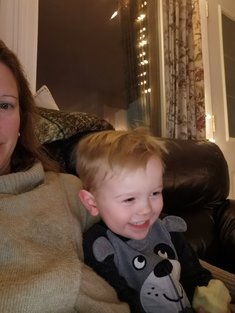 I don’t make a lot of comments about Covid-related things online, but it seems to be all that the world is talking about these days. It is affecting everyone everywhere, whether on a personal or professional level. Some people are worried about losing their jobs, some are feeling disconnected from their friends and family, and others are concerned about their health and lives. I don’t make a lot of comments about Covid-related things online, but it seems to be all that the world is talking about these days. It is affecting everyone everywhere, whether on a personal or professional level. Some people are worried about losing their jobs, some are feeling disconnected from their friends and family, and others are concerned about their health and lives.
Everyone’s feelings are legitimate, but one thing I have noticed through this whole experience is that the kids are okay. I can’t speak for everyone’s children, but I know that the ones I teach and the ones I am raising seem to be doing well. The students that I teach have shown so much resilience, and have been able to adjust to new expectations much easier than a lot of the adults I know (including myself).
My own children seem to be thriving, which I am grateful for! Don’t get me wrong – when things were locked down in the spring, it was a hard situation for our family, like so many other families I know. Without the consistency of a school routine and the people who work so hard to help my oldest son to reach his goals, we found ourselves floundering. We were definitely surviving, not thriving!
 Now that school is back up and running, we are seeing lots of progress in Paddy! He’s making social connections, adjusting to classroom routines, and even started to get the hang of potty training (can I get an “amen”!?). And just this year, he started taking the bus to and from school, which is a huge step toward independence for him! Now that school is back up and running, we are seeing lots of progress in Paddy! He’s making social connections, adjusting to classroom routines, and even started to get the hang of potty training (can I get an “amen”!?). And just this year, he started taking the bus to and from school, which is a huge step toward independence for him!
Kelton is also doing very well at the babysitter’s. He is happy there, and he’s learning to play and interact with his peers. He has gone from destroying and throwing toys to actually starting to play with them in a functional way. He also has an amazing babysitter who has the best snacks, stories and snuggles!
Although the current situation is very challenging, especially for those who are social butterflies like myself, it has at least not taken away the two places that my children show the most growth in! For that we are thankful.
I have also made a few realizations during this quieter time in our lives. Although I am one who enjoys the hustle and bustle of everyday life and especially the Christmas season, my children do not necessarily share that enjoyment with me. With lots of things being locked down, we have been forced to slow down. We are spending more time as a family, connecting with our children and with each other. The bond that the boys have is getting stronger every day! And although neither of them can say it yet, it is clear that they love each other and their parents.
We have also been able to participate in holiday traditions in a less traditional way, which has truly been a silver lining for our family. We got to attend a drive-thru Christmas party at the Autism Society without the stress of getting  dressed up, getting out of the car, being around lots of people, and having to sit on Santa’s lap. We also got to experience the Santa Claus parade from the comfort of our car. No bulky snow suits, no cold weather, no big crowds, and no loud sirens were there to add stress to what should be a joyful time. dressed up, getting out of the car, being around lots of people, and having to sit on Santa’s lap. We also got to experience the Santa Claus parade from the comfort of our car. No bulky snow suits, no cold weather, no big crowds, and no loud sirens were there to add stress to what should be a joyful time.
So, although times are tough, I am still grateful for the things we have. We have replaced outings with dance parties in the kitchen and playing in the basement. Our playdates have become playtime with each other, where the adults play, too! We do less shopping and more snuggling. And mostly we count our blessings, because the kids are okay!
|
|
|
|
|